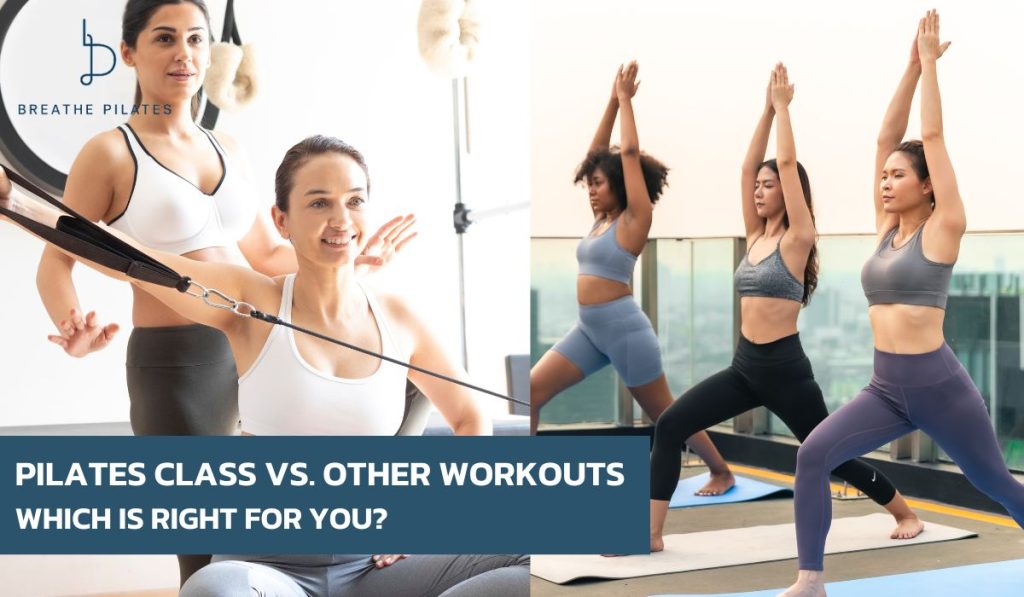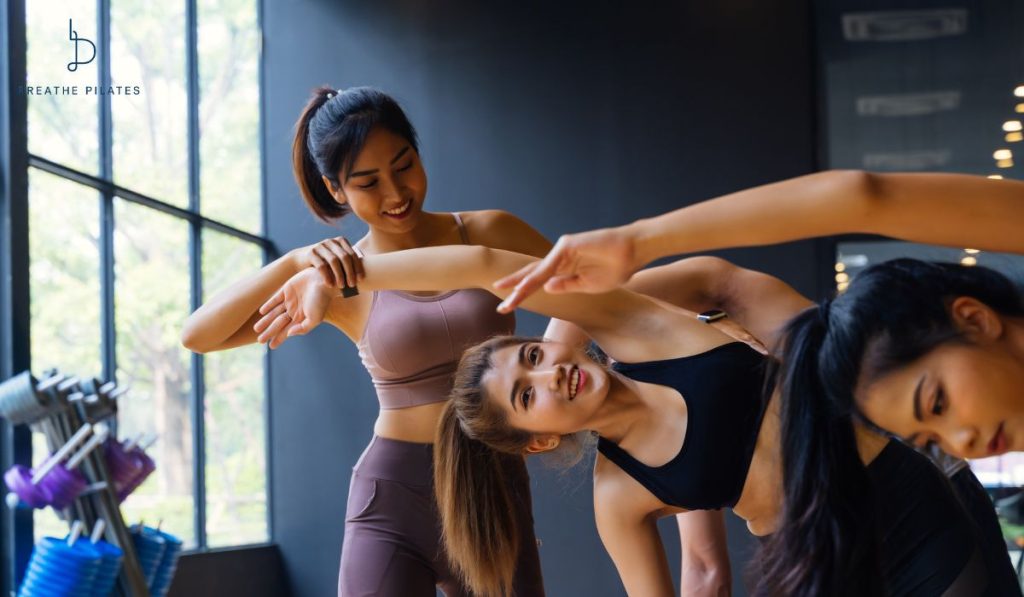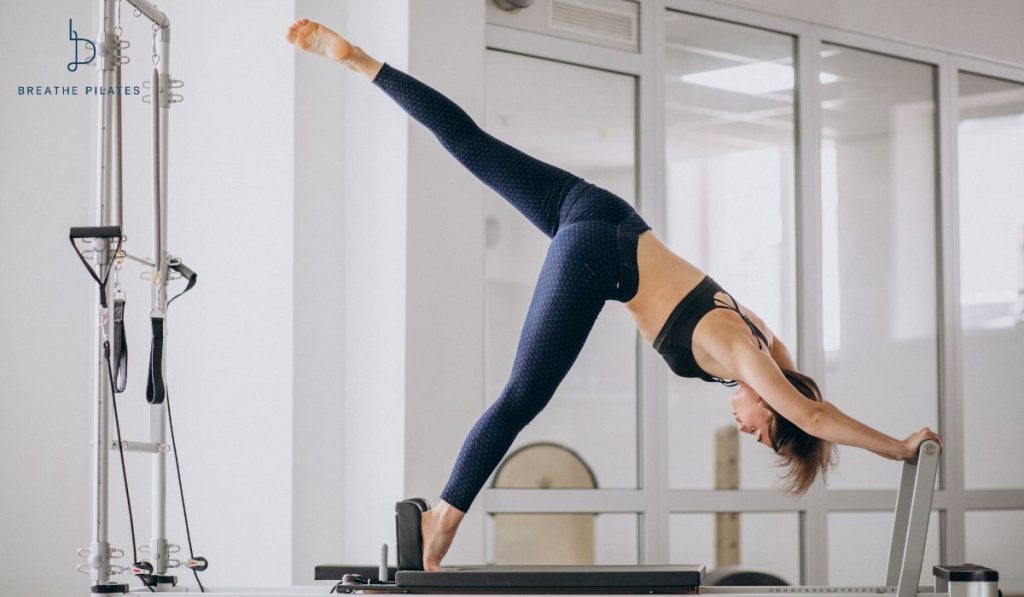
Selecting the wrong workout can lead to unintended consequences, such as injuries, chronic pain, or plateaued progress. It’s essential to find a fitness regimen that aligns with your body’s needs and goals. By understanding the differences between various workout styles, you can make informed decisions about your health and well-being.
Let’s delve into the world of fitness and explore how Pilates Classes vs. Other Workouts can impact your journey to a healthier you.
What Sets Pilates Apart from Other Workouts

While many workouts focus on isolated muscle groups or high-intensity exertion, Pilates stands apart as a holistic exercise method. With its emphasis on core strength, flexibility, and mental well-being, Pilates offers a comprehensive approach to fitness that caters to individuals of all fitness levels. Let’s explore what sets Pilates apart.
Pilates stands out as a comprehensive fitness method that focuses on holistic well-being. Here’s what makes it unique:
1. Focus on Core Strength and Stability
Unlike many workouts that isolate muscle groups, Pilates emphasizes core engagement in every movement. This holistic approach leads to a stronger, more stable body.
2. Low-Impact, High-Effectiveness for Joint Health
Pilates is renowned for its gentle yet effective approach. Low-impact exercises protect your joints while delivering significant strength and flexibility benefits.
3. Mind-Body Connection and Mental Wellness
Pilates goes beyond physical fitness, cultivating a strong mind-body connection. This holistic approach promotes stress reduction, improved focus, and overall well-being.
Comparing Pilates Class to Popular Workouts
Choosing the right workout can be overwhelming, with countless options available. Let’s compare Pilates to some of the most popular workout styles to help you determine which one aligns best with your fitness goals.
1. Pilates vs. Yoga: Flexibility and Relaxation
Both Pilates and yoga emphasize flexibility, body awareness, and breath control. However, Pilates places a stronger emphasis on core strength and muscle toning, while yoga often incorporates meditation and relaxation techniques.
2. Pilates vs. Weight Training: Strength and Muscle Tone
Weight training focuses on building bulk and strength through resistance exercises. Pilates, while building strength, prioritizes functional movement, core stability, and long, lean muscles.
3. Pilates vs. Cardio Workouts: Endurance and Calorie Burn
Cardio workouts like running or cycling excel at burning calories and improving cardiovascular endurance. Pilates, while not a high-intensity workout, contributes to overall fitness and can be combined with cardio for optimal results.
4. Pilates vs. HIIT (High-Intensity Interval Training): Intensity and Quick Results
HIIT focuses on short bursts of intense exercise followed by rest periods. Pilates emphasizes controlled, precise movements and core engagement. While HIIT offers quick results, Pilates provides a sustainable approach to fitness.
Benefits of Combining Pilates with Other Workouts
While other workouts focus on specific fitness goals, Pilates offers a holistic approach that complements and enhances your overall well-being. Let’s explore how incorporating Pilates into your fitness regimen can elevate your results and reduce the risk of plateaus.
For optimal fitness, consider combining Pilates with other workout styles:
- Enhancing Overall Fitness and Balance: Pilates complements other workouts by addressing areas they might miss, such as core strength and flexibility.
- Reducing the Risk of Injury: Pilates improves body awareness and control, reducing the risk of injuries during other workouts.
- Improving Recovery and Flexibility: Pilates can help speed up recovery from intense workouts and enhance flexibility, preventing muscle soreness and tightness.
Who Should Choose Pilates?
Are you struggling with chronic pain, limited mobility, or lack of core strength? Pilates offers a gentle yet effective solution. This versatile exercise method can address a wide range of physical challenges, from back pain and arthritis to postural imbalances and injury recovery. Discover how Pilates can help you regain control of your body and achieve your health goals.
Pilates is suitable for people of all ages and fitness levels, but it is particularly beneficial for:
- Individuals with Chronic Pain or Injuries: Pilates’ low-impact nature and focus on core strength can help manage chronic pain and aid in injury recovery.
- Those Seeking a Low-Impact Workout: Pilates offers an effective workout without putting excessive stress on joints.
- Anyone Looking to Improve Posture and Core Strength: Pilates is unmatched in its ability to address these areas.
Finding the Right Workout for Your Goals
The key to optimal fitness lies in finding a workout that aligns with your body’s needs and preferences. While intense workouts have their place, Pilates offers a unique approach that focuses on building strength, flexibility, and mental resilience from within. By incorporating Pilates into your routine, you’ll discover a newfound sense of balance, control, and overall well-being.
Remember, the best workout is the one you enjoy and can sustain in the long term. Pilates is a sustainable exercise method that empowers you to achieve your fitness goals while reducing the risk of injuries.
Ready to experience the Pilates difference?

Pilates is the key to a stronger, healthier, and happier you.
Whether you are seeking relief from your chronic pain, improved posture, or enhanced athletic performance, Pilates offers a tailored solution.
Start your Pilates journey today and experience the transformative power of this incredible exercise method.
Follow news and great promotions from Breathe Pilates Thailand.
Facebook: Breathe Pilates Thailand
Instagram: breathepilatesth
Line: Breathe Pilates
TikTok: breathepilatesth